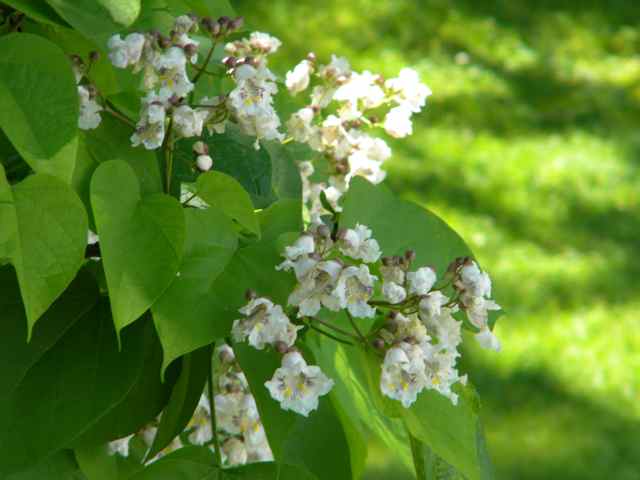Two of my grandchildren have severe allergies, both food and environmental. Their tests show that pollen and tree nuts are some (of several) environmental culprits, leading to flare-ups when they stay at Nana and Pappy's house. But what can we do apart from keeping them indoors? With this problem in mind, I was thrilled to be given the opportunity to review a new book by Thomas Ogren, The Allergy-Free Garden: Stop Asthma and Allergies With Smart Landscaping. Tom, an eminent horticulturist, whose wife has asthma and allergies, became interested in allergy-free gardening more than 25 years ago. His research, lectures and publications have gained worldwide acclaim. I am ashamed to admit I never considered allergy-free landscaping before now. Tom's book, his fourth on this subject, was an eye-opener for me. I am totally in awe of Tom's important work.
I learned from the book that in the 1950's few people had severe allergies, but today asthma is the #1 chronic disease in children in the U.S. Tom explains how we created the problem -- yes, it is man-made. Originally, landscapers used plants propagated by seed, so there were more-or-less equal numbers of male and female. New discoveries allowed growers to produce separate-sexed plants, so they could choose one or the other. As you know, my dear gardening friends, the male produces pollen, the female produces fruit. As the female plants are the messy ones, the USDA recommended only male trees should be planted in towns and cities to reduce the amount of litter on sidewalks. Therefore, less mess, but 10,000 times more pollen than when both male and female were planted. Making it worse, not only do female plants produce no pollen, they trap and remove pollen from the air. The problem was further exacerbated when the trees lost through Dutch Elm Disease were replaced with male trees.
"Pollen is the invisible litterer"
-- Thomas Ogren
Male trees produce no fruit for birds and small animals to eat, and they produce little or no nectar for butterflies, hummingbirds and bees: probably one of the reasons for the decline in butterflies and bees in our cities. Fortunately, we don't have to be so particular about smaller plants. Low allergy pollinator plants make small amounts of large, sticky, not very allergenic pollen. Mints and other pollen-free female plants are rich sources of nectar.
 |
| Catmint Nepata has low amounts of pollen and high amounts of nectar. |
Tom suggests you evaluate your existing plants. He does a good job of explaining perfect (bisexual) flowers, monoecious (single sexed) and dioecious (unisexual), suggesting ways you can determine the sex of a plant, giving several examples of each. An earlier book of Tom's has the attention-grabbing title, Safe Sex. It's a great title now we know the link between the sex of the plant and its power to cause or prevent allergies.
 |
| Snapdragon Antirrhinum. Perfect flower that spreads v. little pollen. |
In one section of the book, Tom discusses eliminating allergy-causing mold spores with such considerations as mulches, airflow, and sunlight. He advocates IPM and avoiding insecticides and fungicides ... in my case this is 'preaching to the choir.' As well as advice on home landscaping, Tom shows how we can fight allergies in neighborhoods and cities by writing letters and sending emails. He draws attention to the concern about pollen in our school yards. In addition, he points out that the push to 'plant more trees' has no regard for the allergy problem.
 |
| Catalpa: OPALS 6 |
 |
| Hydrangea macrophylla: OPALS 3 |
 |
| Hydrangea paniculata 'Pinky Winky': OPALS 5 |
 |
| Deciduous Viburnum: OPALS 3 |
 |
| My many hostas are 1 on the scale |
 |
| Globe amaranth gomphrena globosa :OPALS 4 |
 |
| Foxglove Digitalis: OPALS 2 |
 |
| Daylily Hemerocallis: OPALS 6 |
 |
| Milkweed Asclepia: OPALS 3 |
I read that my Juglans, Black Walnut trees, rank high at 8 to 9. As well as pollen, their rotting husk odor triggers allergies. My grandchildren love to play in the walnut grove where we hung a swing from the largest tree. Oh, dear.
 |
| Eastern Black Walnut Juglans nigra: OPALS 8 - 9 |
Each A - Z plant description gives growing conditions and other information as well as its ranking. Finally, the book has an excellent glossary, recommended reading list, list of useful websites, a pollen calendar, and a USDA Plant Hardiness Zone Map.
Tom sent me a free iBook in return for an honest review. I have ordered a hard copy from Amazon, because I need to take the book with me for reference when I go to the garden center to make my new plant purchases. Some companies have started using OPALS labels, but many have not. I wont be chopping down all my black walnuts right now, but I don't want to add any more high allergens to my garden. Check out Tom's web page, Allergy-Free Gardening, for more information and for links to purchase the book from your favorite book seller.
As you can see, I found the subject extremely interesting. I'm very grateful that I had the opportunity to review this important book. I highly recommend it. I am linking this posting to Beth at Plant Postings: Lessons Learned. A very important lesson, indeed!
Happy, sneeze-free gardening,
Pamela x
 |
| Helleborus ranks 4 |
~~ I love reading your comments. I hope you leave one so I’ll know you visited!
I look forward to visiting your blog in return.


























